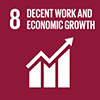Description/achievement of initiative
The N'hambita Community Carbon Project in Mozambique pays 1000 smallholder farmers in the buffer zone of the Gorongosa National Park in Sofala Province for sequestering carbon through the adoption of agroforestry practices and for reduced emissions from deforestation and degradation (REDD) of miombo woodlands.
Source: World Resources Institute (2011) A Compilation of Green Economy Policies, Programs, and Initiatives from Around the World. The Green Economy in Practice: Interactive Workshop 1, February 11th, 2011
Initiated in 2003, the project pays 1000 smallholder farmers in the buffer zone of the Gorongosa National Park in Sofala Province for sequestering carbon through the adoption of agroforestry practices and for reduced emissions from deforestation and degradation (REDD) of miombo woodlands. The European Union provided core funding for the project from 2003-2008. Technical assistance was provided by Envirotrade, the Edinburgh Centre for Carbon Management, and the University of Edinburgh School of GeoSciences. Farmers are contracted to sequester carbon on their farmlands through adoption of agroforestry practices from a "menu" that includes horticultural tree species, woodlots, intercropping food crops with Faidherbia albida, planting native hardwoods around the boundary of the machambas, and planting fruit trees within the homestead. The N'hambita Community Carbon Project is serving as a demonstration model which will be replicated in other areas both within and outside of Mozambique.
The benefits of the project are as follows:
- A minimum of two-thirds of carbon credit sales revenues are to be returned to the local community in the form of contracted payments to farmers and community activities and payment for in-country services;
- Prevention of the release or sequestered more than 250,000 tons of carbon dioxide;
- Restoration and protection of more than 10,000 hectares;
- Increased project opportunities for carbon buyers.
Implementation methodologies
Arrangements for Capacity-Building and Technology Transfer
Coordination mechanisms/governance structure
Partner(s)

